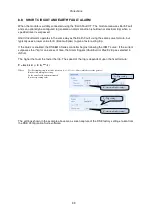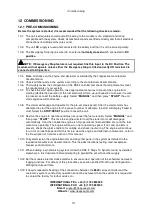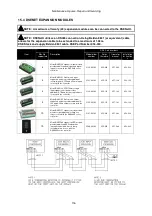
Commissioning
111
12 COMMISSIONING
12.1 PRE-COMMISSIONING
Before the system is started, it is recommended that the following checks are made:-
10.1. The unit is adequately cooled and all the wiring to the module is of a standard and rating
compatible with the system. Check all mechanical parts are fitted correctly and that all electrical
connections (including earths) are sound.
10.2. The unit
DC
supply is fused and connected to the battery and that it is of the correct polarity.
10.3. The Emergency Stop input is wired to an external
normally closed
switch connected to
DC
positive.
NOTE: If Emergency Stop feature is not required, link this input to the DC Positive. The
module will not operate unless either the Emergency Stop is fitted correctly OR terminal 3 is
connected to DC positive.
10.4. Make all checks on the engine and alternator as detailed by their respective manufacturer
documentation.
10.5. Check all other parts in the system according to the manufacturer documentation.
10.6. Thoroughly review the configuration of the DSE controller and check that all parameters meet
the requirements of your system.
10.7. To check the start cycle operation, take appropriate measures to prevent the engine from
starting (disable the operation of the fuel solenoid). After a visual inspection to ensure it is safe
to proceed, connect the battery supply. Select
“MANUAL”
and then press
“START”
the unit
start sequence will commence.
10.8. The starter will engage and operate for the pre-set crank period. After the starter motor has
attempted to start the engine for the pre-set number of attempts, the
LCD will display ‘Failed
to
start
. Select the
STOP/RESET
position to reset the unit.
10.9. Restore the engine to operational status (reconnect the fuel solenoid). Select
“MANUAL”
and
then press
“START”
. This time the engine will start and the starter motor will disengage
automatically. If not then check the engine is fully operational (fuel available, etc.) and the fuel
solenoid is operating. The engine will now run up to operating speed. If not, and an alarm is
present, check the alarm condition for validity, and check input wiring. The engine will continue
to run for an indefinite period. At this time to view the engine and alternator parameters - refer to
the ‘Description of Controls’ section of this manual.
10.10. Fully commission the engine/alternator and any other parts in the system as detailed in the
respective manufacturer documentation. This includes load bank testing, load acceptance,
breaker control and more.
10.11. When building a synchronising system, follow the DSE “4 Steps To Synchronising” as detailed
elsewhere in this document before attempting to parallel the set with another supply.
10.12. Set the modules internal clock/calendar to ensure correct operation of the scheduler and event
logging functions. For details of this procedure see section entitled
Front Panel Configuration –
Editing the date and time.
10.13. If despite repeated checking of the connections between the
8600
series controller and the
customer’s system, satisfactory operation cannot be achieved, then the customer is requested
to contact the factory for further advice on:-
INTERNATIONAL TEL: +44 (0) 1723 890099
INTERNATIONAL FAX: +44 (0) 1723 893303
E-mail:
Website :
www.deepseaplc.com
Summary of Contents for DSE8610
Page 47: ...Installation 47 4 2 2 3 PHASE 4 WIRE WITHOUT EARTH FAULT PROTECTION...
Page 51: ...Installation 51 4 3 2 SINGLE PHASE WITHOUT EARTH FAULT...
Page 53: ...Installation 53 4 3 4 2 PHASE L1 L2 3 WIRE WITHOUT EARTH FAULT...
Page 55: ...Installation 55 4 3 6 2 PHASE L1 L3 3 WIRE WITHOUT EARTH FAULT MEASURING...
Page 118: ...Intentionally Left Blank 118...






















